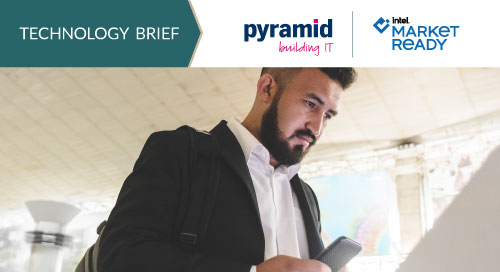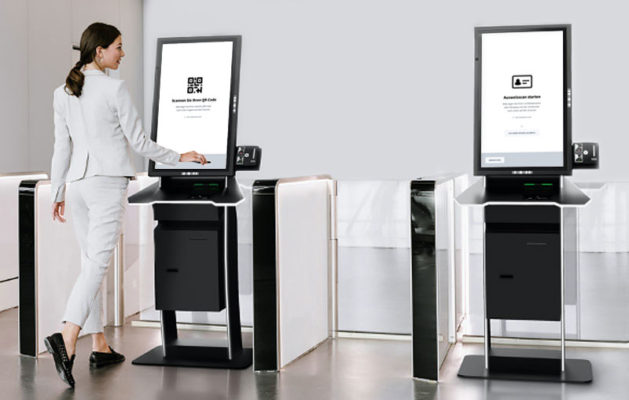Biometrics and AI Tech Streamline Visitor Security

When customers and contractors visit a business, they usually check in by signing a paper form and displaying an ID—a process that’s inefficient, subjective, and noncompliant with privacy regulations like GDPR. Now, visitor management systems are combining new technologies like biometrics, 3D cameras, and AI to help businesses keep people safe while also improving their experience.
Unverified visitors can endanger occupants in buildings and venues, and in the age of coronavirus, ill visitors can unknowingly infect others in the space. But current check-in procedures create what’s called a trilemma: building managers need to provide security, efficiency, and a pleasant visitor experience, but they can handle only two of these at most. For example, a secure and efficient process might require extra-thorough ID checks, impacting the visitor experience. A visitor-friendly, efficient process would prioritize speed, making it less secure.
There are other challenges, as well: Using the traditional paper-based system, visitors have to wait in line, where they can easily see the personal information of the visitor before them. ID match is subjective, causing facilities to allow people with fake IDs to slip past. And of course, this system can’t check for threats like COVID-19. Even tablet-based solutions don’t solve the trilemma.
Now, network and security IT solutions providers are bringing products to market that handle all three of these requirements. For example, Pyramid Computer GmbH, a worldwide kiosk manufacturer, partnered with Intel® and the visitor management company essentry to develop the polytouch access control kiosk. This solution uses AI and biometrics to compare a visitor’s biometric information with the person who is checking in.
“The kiosk offers border control-level secure identification,” says David Frei, Pyramid’s Vice President of Strategic Partnerships. This makes it ideal for facilities that need extra-tight security, like airports, chemical companies, hospitals, and data centers (Figure 1).

Hello, Tyler
Here’s what the new experience is like for the visitor and the facility:
Tyler enters the lobby of a large, international publishing company. This building has a lot of foot traffic, which would normally translate to a high demand for staff to check visitors in and out. But the publisher recently installed the Pyramid polytouch access control kiosk system, allowing the company to save money on staff and free up its human resources for other tasks. There’s only a short line, because the Visitor Management System takes only 30 seconds to one minute per visitor compared to manual check-ins that can take up to 30 minutes.
“The software running on the kiosk is intuitive and walks you through the steps,” says Frei. The kiosk welcomes Tyler and asks several questions. These depend on the vendor’s question catalog; in this case, it asks Tyler his name, reason for visiting, and whether he’s had contact with COVID-positive people in the past two weeks. He fills in the required information: He’s there to see Erin James for a photo shoot and hasn’t been around anyone with COVID.
ID verification data is processed locally on the @polytouch_de kiosk and deleted after authentication—protecting visitor privacy.
Computer Vision Makes a Perfect Biometric Match
Tyler is instructed to place his ID card or passport on top of the ID scanner. It’s fairly easy to forge the photo and written information on an ID card, but scanning with ultraviolet and other light frequencies addresses this with built-in border-control grade security.
Within seconds, an Intel® RealSense™ camera uses computer vision to perform the biometric match, comparing the data on the ID with Tyler’s actual face. The camera can sense whether what it’s detecting is three-dimensional and moving, so Tyler can’t just hold up an image of a face.
Using these procedures, the polytouch access control kiosk has managed to unearth 50 fake or expired ID cards over the past four-month period for this business.
This publisher also wants to check visitors for COVID symptoms, so a thermal camera takes Tyler’s temperature.
All the information flows into the facility’s ERP or other back-end systems so the publisher has a full record of all the employees and vendors who enter the building. The ID verification data is processed locally on the kiosk and deleted after authentication, protecting visitor privacy.
The kiosk resets itself for the next visitor, who is unable to see Tyler’s private information.
Protecting Others
If everything checked out, Tyler would get a green light and go on his way. But his temperature registers above the threshold, so a notification is sent to a staffer who intercepts Tyler to follow the company’s protocol.
Later, Tyler gets a COVID test and it comes out positive. He calls the publisher to let them know, and the system quickly sends out emails and SMS notifications to every employee and visitor who was on-site the same day as Tyler.
Every organization has its unique visitor trilemma, and the same system that worked for the publisher can be tuned to meet other security protocols. By incorporating the latest AI and computer vision technologies, Pyramid Computer with essentry continues to improve the visitor experience while accommodating companies’ evolving needs.